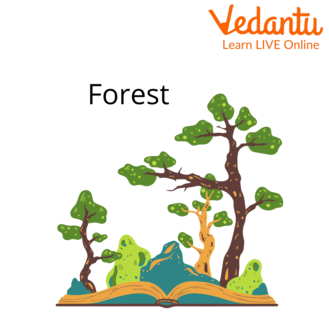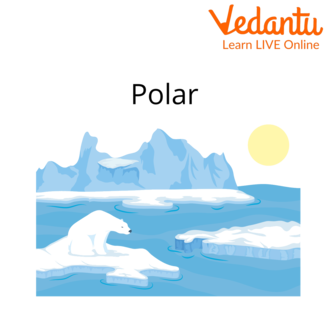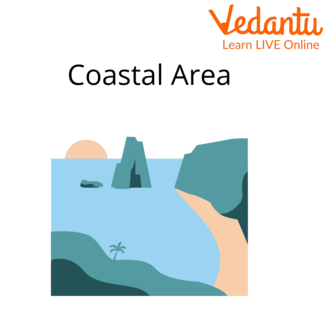How Do Living Organisms Interact With Their Environment?
There are many things around us; some may be living or some may be nonliving. Living beings have special characteristics and perform various life processes like respiration, transportation, reproduction etc. and are called living organisms. These organisms are adapted to certain places in their surroundings, these are called habitats. Besides air, food and water, every animal needs a certain type of habitat or surrounding where it can live and flourish. Habitats mainly are of 2 types: terrestrial and aquatic.
Living Organisms: Definition
Living organisms are independent organic entities that are composed of cells. These are involved in certain activities which are necessary for living, these are known as life processes.
Characteristics of Living Things or Living Organisms
some special characteristics are found in all living organisms; these are as follows:
Cellular Organisation: All living things are composed of cells. These cells are the structural and functional units of living organisms.
Nutrition: Food is important for all living things. But why do organisms need to take food? They need it to obtain energy. This energy can be utilised to perform various day-to-day activities and also helps in body growth and development as well as in maintenance and repair.
Respiration: All living beings respire, i.e., they breathe in oxygen from the air and release carbon dioxide.
Growth: Growth is a permanent, irreversible process that shows different patterns for different organisms. In this, all living beings grow from a single cell into an adult organism made up of millions of cells.
Excretion: Accumulation of waste materials is harmful to the body. Thus, waste materials are needed to be removed from the body. The process through which the removal of waste matter occurs is known as excretion.
Reproduction: All living organisms possess the ability to produce young ones of their kind, this ability is known as reproduction. For example, a dog produces puppies who grow into adult dogs. A seed develops into a young seedling and then into a tree.
Movement: Living things show movement. A change in position is called locomotion. Animals show locomotion but plants do not. Plants show movements only.
Response to Stimuli: Living beings respond to changes (stimuli) in their surroundings. For example, if any of our body parts touch a hot object, we respond by quickly withdrawing it. A plant root moves towards water (hydrotropic).
Classification of Living Organisms
Living organisms are classified into the following groups based on their similarities and dissimilarities, namely, Kingdom, Phylum, Class, Order, Family, Genus and Species.
But the question emerges “Why are living organisms classified?” The answer is classification makes it easier for scientists to study whole living organisms. Each living organism has several characteristics, thus grouping organisms based on cellular organisation, nutrition, mode of reproduction etc. makes the study easy.
Living Organisms and Their Surroundings
Living beings can survive only under certain conditions. The surrounding where the living being resides is called the habitat.
Organisms depend on their habitat for their food, water, shelter and other requirements.
The three main types of habitat are as follows:
1. Terrestrial Habitat: Land, mountains, forests and deserts are called terrestrial habitats. Living organisms that live on land are called terrestrial organisms. For example, man, lion, trees etc.
Forests: Large areas covered with trees and plants. Wildlife in the forest includes both plants and animals. Different types of forests are tropical forests, temperate forests and boreal forests.

Forest Habitat
Grasslands: These are mainly covered by long, thick green grasses. Temperature ranges between -20oC and 30oC and the annual rainfall varies between 50 cm and 90cm.
Deserts: These are the areas that receive very low rainfall. These are dry and completely covered with sand. There can be cold or hot deserts. Annual rainfall in deserts is less than 25 cm.
Mountains: These regions are rocky and dry. Sometimes water may be present as flowing streams. As the altitude increases, temperatures fall. Winds are dry and cold.
Polar Region: These are covered with high snowy peaks.

Polar Habitat
2. Aquatic Habitat: Oceans, lakes, rivers, ponds etc. are called aquatic habitats or water habitats. Organisms that live and reproduce in water are called aquatic organisms.
Freshwater Habitat: These are the water bodies filled with fresh water such as rivers, lakes, ponds, streams etc.
Marine Habitat: Oceans and seas are referred to as marine habitats. These have a high concentration of salt within them.
Coastal Habitat: This region presents the place where land meets the sea.

Coastal Habitat
3. Aerial or Arboreal Habitat: Tropical forests are known as aerial or arboreal habitats.
Living Organisms Examples with Their Habitats
Plants in Our Surroundings
There are abundant varieties of plants we see around us in parks, forests and in the surroundings in which we live. These plants help to maintain ecological balance and keep the environment stable. The common plants seen in our surroundings include herbs like grasses, mint, cilantro etc. The shrubs are seen in gardens like roses and orchids. The road's sides are planted with plants that can absorb pollution and make it reasonable. Examples of such plants are Neem, Mahua, Indian rosewood etc.
Interesting Facts
Every organism has special features which enable them to survive and reproduce in certain environmental conditions. This occurs naturally and it is called adaptation.
Growth is a feature of living beings but nonliving organisms can also show growth through the accumulation of external materials.
Plants in our surroundings are the main source of food on this Earth.
Key Features
Living organisms are organic systems made up of cells.
Living beings perform nutrition, respiration, excretion, reproduction, movement and response to stimuli.
Living beings are adapted to various habitats and depend on these habitats for food, shelter and other needs.
These habitats can be either terrestrial, aquatic or arboreal.


FAQs on Living Organisms and Their Surroundings: Key Concepts
1. What are the key characteristics that define an organism as 'living'?
According to the CBSE syllabus, the key characteristics that distinguish living organisms from non-living things are:
- Growth: A permanent increase in the size of the body.
- Respiration: The process of breathing to release energy from food.
- Excretion: The removal of waste products from the body.
- Response to Stimuli: The ability to react to changes in the surrounding environment.
- Reproduction: The process of producing offspring of their own kind.
- Movement: The ability to move from one place to another or show body movements.
- Nutrition: The process of taking in and utilising food for energy and growth.
2. What is a habitat and what are its two main components?
A habitat is the natural home or environment where an organism lives, which provides it with food, water, shelter, and space for survival. The two main components of any habitat are:
- Biotic Components: All the living things in a habitat, such as plants, animals, fungi, and bacteria.
- Abiotic Components: All the non-living things in a habitat, such as sunlight, air, water, soil, rocks, and temperature.
3. How is the growth in a living being different from the growth of a non-living object like a mountain?
The primary difference lies in the process. Growth in living beings is internal, resulting from cell division and an increase in body mass from within. In contrast, a non-living object like a mountain 'grows' through external accumulation, where materials like dust, sand, or lava are deposited on its surface. This is not considered true growth.
4. What is adaptation, and why is it essential for the survival of plants and animals?
Adaptation refers to the specific physical features or behaviours that an organism develops over time to survive and thrive in its particular habitat. It is essential for survival because it helps an organism to:
- Cope with abiotic factors like extreme temperatures or water scarcity.
- Obtain food and water more effectively.
- Protect itself from predators.
- Reproduce successfully in its environment.
Without adaptations, an organism would not be able to survive the challenges of its surroundings.
5. What are some common adaptations found in desert animals like camels?
Camels exhibit several key adaptations for desert life, including:
- Long eyelashes and closable nostrils to protect against blowing sand.
- A hump to store fat, which can be converted into energy and water.
- Wide, leathery foot pads to walk on hot, soft sand without sinking.
- The ability to drink large amounts of water at once and tolerate dehydration.
6. How do plants in mountain regions adapt to the cold climate and snowfall?
Plants in mountain regions have unique adaptations to survive the harsh conditions. For example, many trees like pines and firs are cone-shaped with sloping branches. This shape allows snow to slide off easily, preventing the branches from breaking under its weight. Their leaves are often needle-like with a waxy coating to reduce water loss and withstand cold winds.
7. Why is responding to stimuli considered a vital characteristic of life? Can you provide an example?
Responding to stimuli is vital because it is the primary way an organism interacts with its environment for survival. This response helps it find food, escape danger, and adjust to environmental changes. For example, if you accidentally touch a hot pan (the stimulus), you immediately pull your hand away (the response). This reflex action prevents a severe burn, demonstrating a direct link between response and survival.
8. What is the fundamental difference between a non-living thing and a dead organism?
A non-living thing, like a stone or a table, was never alive and does not possess the cellular structure or characteristics of life. A dead organism, such as a fallen leaf or a dead insect, was once alive. It is made of cells and previously carried out life processes like respiration and growth, but these processes have now permanently stopped.










